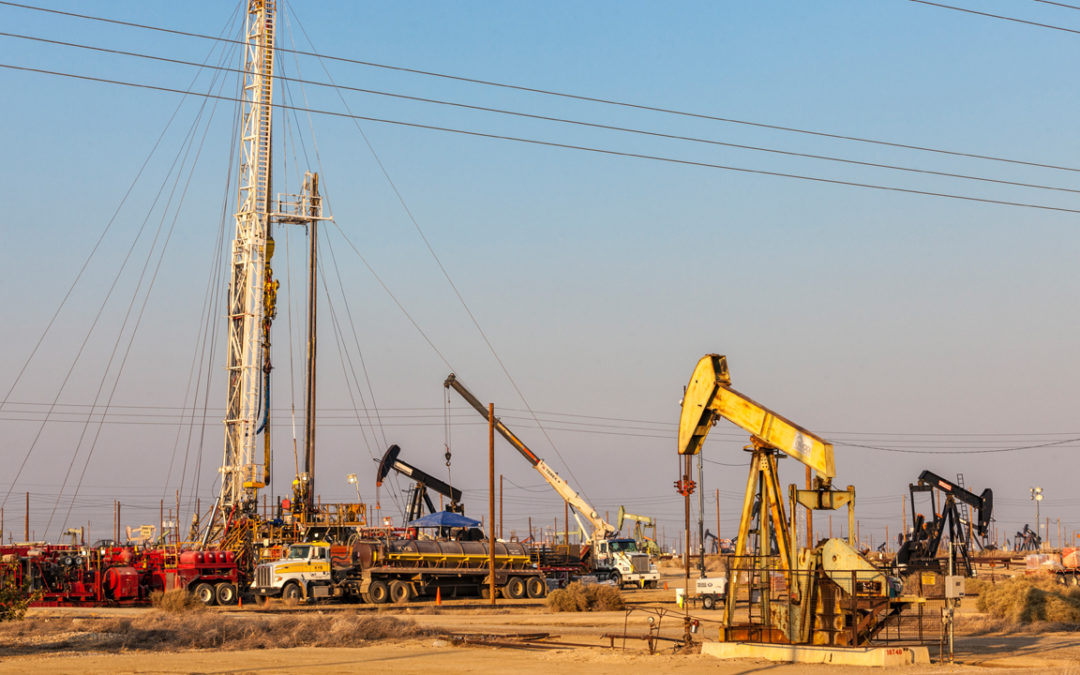SOURCE: The Real News
DATE: August 6, 2020
SNIP: California-based multinational oil company Chevron landed two rounds of drilling permits from Gov. Gavin Newsom this summer—evidence, climate advocates say, that Newsom is not committed to tackling the climate crisis.
The permits bolster Chevron’s position in the Lost Hills Oil Field, the sixth most prolific field in industry-heavy Kern County, and will shift drilling in the field largely towards using power from solar panels. One critic called the way the permits use climate crisis rhetoric “Orwellian,” incorporating solar power into drilling operations to expand the use of fracking and oil production. The variety of oil extracted in California is among the most greenhouse gas intensive in the world.
One of the drilling permits, given to Chevron from the California Geologic Energy Management Division (CalGEM) to frack 12 wells, was granted just before the Fourth of July weekend. The other permit, given by the California Air Resources Board (ARB) on June 5, will enable a solar energy production partnership between Chevron and Wall Street titan Goldman Sachs to power drilling in the same oil field under the Low Carbon Fuel Standard program.
Before the latest fracking permits came the solar-powered drilling permit. One advocate, on Twitter, wrote that this signifies that the “environmental movement needs a course correction.”
Chevron and Goldman Sachs got the permit through the Innovative Crude Oil Applications program, a program within the Low Carbon Fuel Standard (LCFS), administered by the ARB. Nominally, LCFS exists to regulate and lower the carbon intensity of petroleum-based transportation fuels burned in California. In reality, LCFS has often created accounting tricks to expand oil production.
In the case of the Chevron and Goldman Sachs joint permit, project proponents say using solar power to drill at Lost Hills is better from a climate mitigation perspective than powering the drilling with fossil fuels. Critics in the climate justice space, though, see the permit as giving oil drilling in Lost Hills a false green image by only examining one aspect of the oil production and marketing lifecycle from a greenhouse gas emissions perspective. The whole picture, they say, is needed when examining the climate impacts of oil drilling.
“Over 90% of oil produced in California is now very low quality heavy crude according to the EIA,” Kyle Ferrar, western program coordinator for the FracTracker Alliance, wrote via email. “Both extracting and refining the tar-like crude requires highly energy-intensive techniques, resulting in a carbon footprint higher than that of Canadian tar sands.”
Ferrar pointed to a 2017 report by the Center for Biological Diversity, noting, “California oil is some of the dirtiest on the planet.”
Hughes of Biofuelwatch calls the program both “Orwellian” and “not climate friendly.”
“The use of solar power for oil drilling activities, whether it be for electricity to power the drilling itself or solar used to heat water for use in drilling, has on paper the ability to make the drilling seem more climate friendly by reducing the carbon intensity of fuels,” Hughes wrote via email. “But, just as the cap-and-trade program does, it hides the real damage that is being done from fossil fuel use: fossil fuel emissions are a one way injection of greenhouse gases into the atmosphere.”

